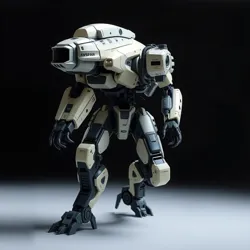Biomechanical Combat Units

Biomechanical Combat Units (BCUs) are sophisticated synthetic warfare platforms that combine advanced robotics with organic-inspired design principles. First developed in 2158, these units represent the pinnacle of autonomous combat systems and serve as the foundation for modern military operations.
Design and Architecture
BCUs feature a modular design based on quantum-reinforced exoskeletons that provide both protection and enhanced mobility. Their neural cores utilize advanced processing matrices capable of making complex tactical decisions in milliseconds while maintaining swarm coordination with other units.
Key Components
- Reinforced titanium-alloy frame
- Micro-fusion power core
- Quantum neural network
- Self-repairing nanite systems
- Adaptive armor plating
Combat Capabilities
BCUs excel in various combat scenarios through their ability to: - Process multiple threat vectors simultaneously - Deploy quantum shielding against energy weapons - Coordinate tactics through swarm intelligence - Self-repair during active combat - Operate in extreme environments
Variants
Primary Combat Models
- Mantis Class - Assault specialists
- Scorpion Class - Defensive units
- Spider Class - Infiltration units
Support Units
- Beetle Class - Heavy transport
- Wasp Class - Aerial combat
- Ant Class - Engineering support
Operational History
BCUs have proven highly effective in both conventional warfare and specialized operations. Their first major deployment during the Synthetic Defense Initiative demonstrated unprecedented success rates in combat scenarios.
Recent Developments
Current research focuses on integrating enhanced quantum decision matrices and developing more sophisticated autonomous capabilities. The latest generation features improved swarm coordination and advanced adaptive learning systems.
See Also
- Synthetic Warfare Systems
- Military Robotics Evolution
- Combat Neural Networks
References
- Advanced Combat Systems Review
- Journal of Military Robotics
- Synthetic Warfare Quarterly